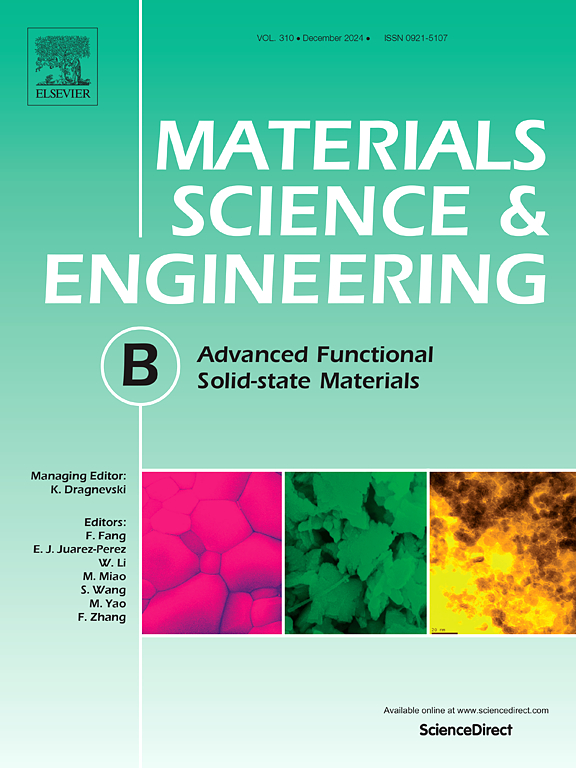Design and optimization of high-performance MoSe2/PC60BM heterostructure based self-powered photodetector
IF 3.9
3区 材料科学
Q2 MATERIALS SCIENCE, MULTIDISCIPLINARY
引用次数: 0
Abstract
This study explores the performance of molybdenum diselenide (MoSe2) based photodetectors for wearable technology, point-of-care diagnostics, and environmental monitoring, focusing on the MoSe2 absorber layer and [6], [6]-phenyl C60 butyric acid methyl ester (PC60BM) in an Au/MoSe2/PC60BM/FTO configuration. Using the solar cell capacitance simulator, we optimized various physical parameters of the MoSe2 layer, including thickness, doping, defect density, interfacial defects, and radiative recombination, to achieve optimal device performance. The optimized device exhibited a maximum detectivity of 6.70×1013 Jones and a responsivity of 0.60 A/W under 790 nm illumination. The impact of incident power, temperature, and different metal contacts was also examined. This study uniquely integrates multiple critical parameters, including temperature-dependent behavior and metal contact effects, providing a comprehensive analysis that differentiates it from previous work. Our findings highlight the potential of transition metal dichalcogenides (TMDC) based photodetectors for a range of optoelectronic applications.

求助全文
约1分钟内获得全文
求助全文
来源期刊

Materials Science and Engineering: B
工程技术-材料科学:综合
CiteScore
5.60
自引率
2.80%
发文量
481
审稿时长
3.5 months
期刊介绍:
The journal provides an international medium for the publication of theoretical and experimental studies and reviews related to the electronic, electrochemical, ionic, magnetic, optical, and biosensing properties of solid state materials in bulk, thin film and particulate forms. Papers dealing with synthesis, processing, characterization, structure, physical properties and computational aspects of nano-crystalline, crystalline, amorphous and glassy forms of ceramics, semiconductors, layered insertion compounds, low-dimensional compounds and systems, fast-ion conductors, polymers and dielectrics are viewed as suitable for publication. Articles focused on nano-structured aspects of these advanced solid-state materials will also be considered suitable.
 求助内容:
求助内容: 应助结果提醒方式:
应助结果提醒方式:


